New partnership announced with Borderless
Sona and Borderless announce an exciting partnership.
Building a staff schedule couldn’t be easier.
Reduce payroll errors with real-time T&A.
Fill 50% more shifts with your own employees.
Ensure shifts are covered even if you're understaffed.
Manage absence requests and approvals.
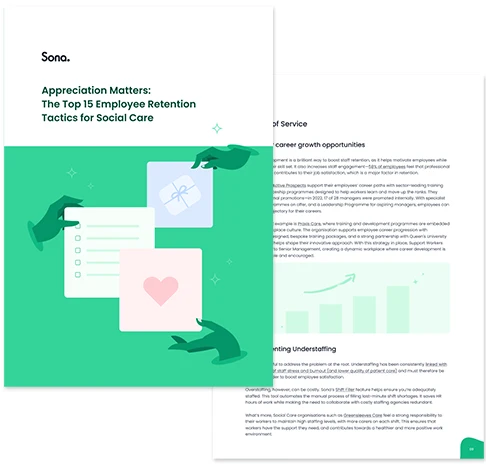
Practical ways to boost team morale with proven examples from across the sector.
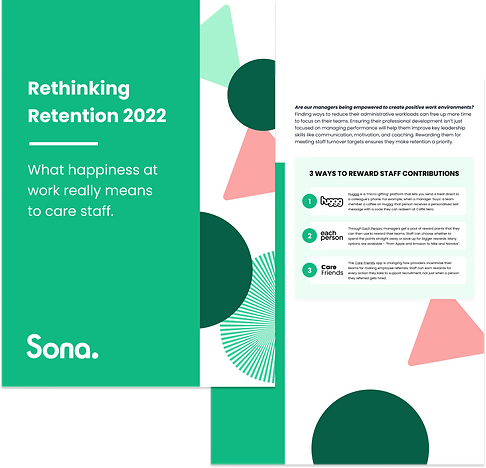
Find out what care employees say matters to them most at work.
Search and view employees with customised permission levels.
Key employment information all in one place.
Store visas, professional certifications and more with easy access.
Control personal and operational details of your staff.
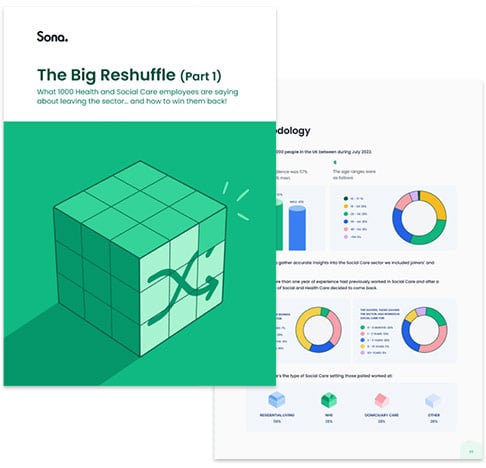
Why are people leaving Social Care, and where are they going?
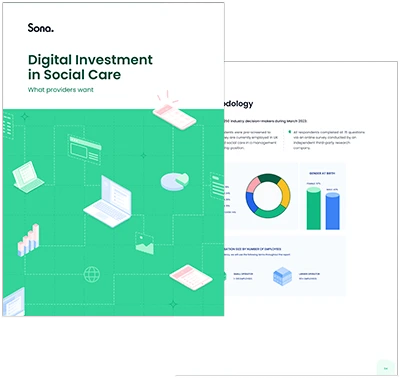
We asked 250 Social Care leaders about their attitudes towards digitisation and their plans for the next 12 months...
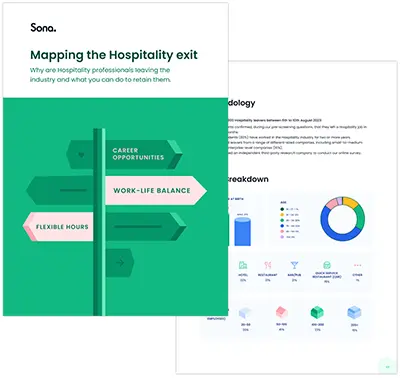
Why are Hospitality workers leaving the industry, and what can you do to retain them?
Share updates with a single click.

Staff can see relevant messages in one place.
Request post-shift feedback from staff.
Recognise staff contributions by sending them praise.
Identify staff at risk of churning.
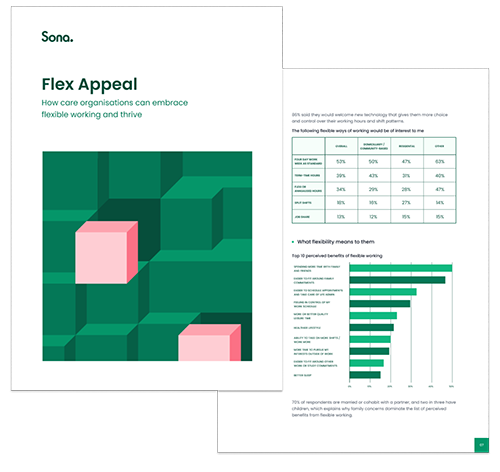
How care organisations can embrace flexible working and thrive.
Maintain quality of care and reduce costs.
Maximise profitability through AI-powered forecasting & scheduling.
Elevate your operational efficiency and guest satisfaction.
Streamline operations across sites.
Developed alongside Social Care experts with decades of combined experience.
See why we are the leading user-friendly, end-to-end platform that prioritises both efficiency and wellbeing.
The Sona Partner Network is an ecosystem of solution experts and complementary technologies.
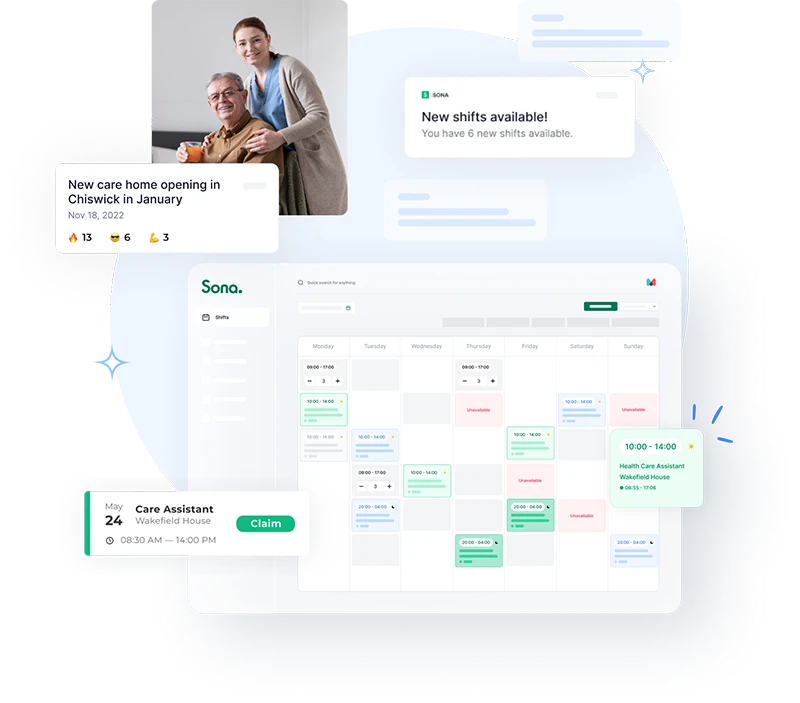
Give staff greater visibility of shifts available to work, with a simple "shift claim" process to increase their income.
Improve employee engagement and retention with a seamless employee communication platform.
Happier staff provide greater customer experiences, which in turn drives return rates, revenues and recommendations.
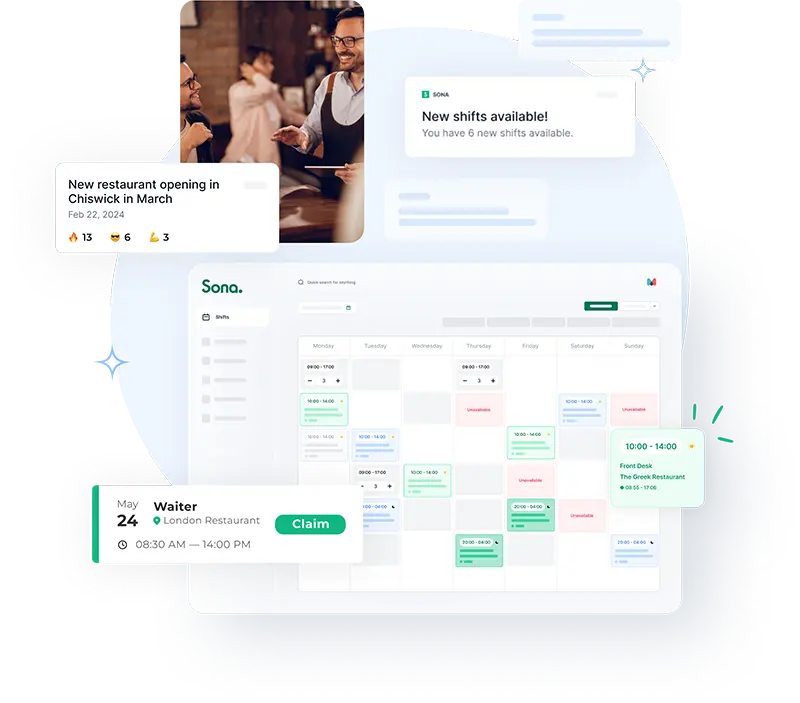
Give staff greater visibility of shifts available to work, with a simple "shift claim" process to increase their income.
Improve employee engagement and retention with a seamless employee communication platform.
Happier staff provide greater customer experiences, which in turn drives return rates, revenues and recommendations.
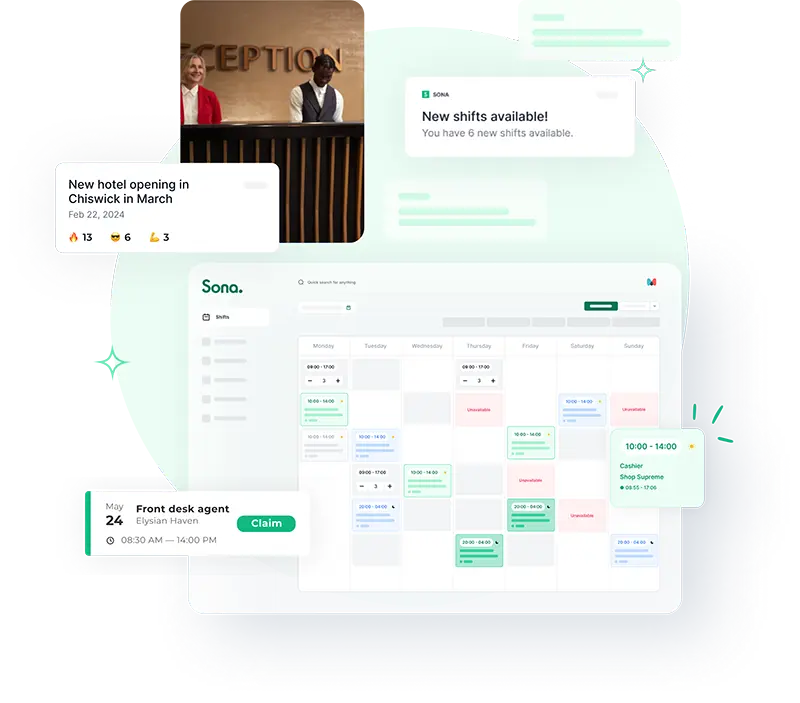
Meet the Sona team online with our webinar series or in-person at an event near you.
New research, insights, and strategies for frontline leaders.
Downloadable templates, reports and guides from Sona.
Stay up to date with the latest Sona news and research.
Learn how our customers are transforming their people operations.
| 3 min read
Sona and Borderless announce an exciting partnership.
| 2 min read
Sona and Found by Lottie announce an exciting partnership.
| 4 min read
Remove operational errors, drive efficiency, and help your team spend less time on admin with a unified solution.
PUBLISHED: February 2025
Download the report to learn how hospitality operators are embracing AI challenges and opportunities in 2025.
PUBLISHED: January 2025
Reveal the most important metrics in 2025!
PUBLISHED: December 2024
This infosheet is packed with practical insights to drive high-quality, low-regret WFM purchases.Richard, our Head of Product with more than 10 years of experience in the sector, will walk you through Sona's AI features designed specifically for large Care providers.
Scroll down for a deep dive into what leadership teams will be able to achieve with next-generation solutions.
Contents
Care organisations are inherently complex due to their responsibility to provide support to those most vulnerable. The larger the operation, the more processes it needs to ensure compliance, employee satisfaction, and a high standard of service.
The knock-on effect of this complexity can slow down operations and impact recruitment and retention rates, as care work becomes less about people and more about process. This is particularly evident in managerial positions, which slowly lose their aspirational appeal.
Fundamentally, what carers need, what registered managers need, what leads and directors need — everyone in Care — is time. Time to spend with the people they support, time to build a strong organisational culture, time to look back on the strategies that worked and those that didn’t and improve. [...] This is where AI can make a difference. Not in trying to replace human interactions — we can’t replace that, and I don’t think anyone wants to replace that — but in taking care of admin, while making time for people to interact.
Karolina Gerlich, CEO at The Care Workers’ Charity
At the leadership level, these threads effectively stifle business growth and can pose an obstacle to potential acquisitions and expansions.
Technology and the newest developments in next-generation solutions can help manage these complex operations and empower organisations to reach their full potential.
[Technology] has given us the confidence to grow. What it’s allowed us to do is not use resources and processes as a barrier, so whereas before we may have said ‘Actually, if we’ve got three opportunities [for acquisition], we’ll only take one because it’s going to take some time to bring it on board, we’re going to have to bring in our processes.’ We can now say ‘We’ll take all three,’ because we know we can take them and streamline them into our processes, no problem, and while we’re doing that, we can go and look for the next ones rather than have the team’s entire focus be on a laborious implementation process.
Claire Bunker, Growth & Development Director at Yorkshire Care Group
For high-performing leadership teams looking to formulate workforce strategies and implement the right tech, understanding the context around AI developments and what makes a solution next-generation is key. These are the characteristics to look out for:
Being able to accurately forecast staffing requirements and labour costs puts leadership teams in a unique position to select which acquisitions will be the most successful. At the same time, it offers the ability to be proactive in managing staff levels and schedules, which enables work-life balance and flexibility (e.g. by sending out schedules 4+ weeks in advance). This also helps deliver an exceptional service, as it prevents any hours from being missed and ensures consistency of care, giving supported individuals visibility into their carers’ schedule.
Detailed forecasts coupled with the scalability that comes with next-generation technology are what enable operators to easily handle massive personnel and capacity growth without losing efficiency, lowering employee satisfaction, or risking compliance errors.
Optimising staff schedules for maximum efficiency and compliance can significantly impact the revenue potential of a large operator. For example, Style Acre reduced their agency spend by 60% through better labour deployment, releasing approx. £24k per month in funds.
These efficiency gains don’t taper after the first year either; they continue as the organisation grows and makes full use of their tech.
Read more: How to invest in solutions that pay for themselves
Auto-scheduling takes information from productivity engines and ensures an optimum schedule is produced, which conforms to regulatory requirements while accounting for staff and supported person metrics (e.g. visa limitations, 2:1 care, etc.). A manager only needs to check and publish this schedule, saving a significant amount of time.
Once set up, auto-scheduling can handle 2,000 employees with the exact same ease and process it would use to handle 1,000 and continue to ensure optimum and compliant care for every supported individual. This means 50% growth in capacity would have no impact on operational efficiency from a scheduling point of view.
The Large Language Models which power modern AI mean that rather than overwhelming managers with charts and figures, a co-pilot style feature can surface real, actionable insights for activities they can do to drive revenue, organise operations, and support staff more effectively.
For example, using shift feedback and overtime data, it can highlight employees at risk of burnout and encourage team leads to check-in, effectively helping to increase retention rates and job satisfaction.
Making career progression aspirational can significantly increase retention rates in the Care sector. But moving into a more senior role usually means more responsibility and increased admin in order to handle a larger number of settings, a team of people, or more systems.
This can discourage some employees from looking to progress. AI can help operators shift the focus of managerial roles from processes to what attracts individuals to the sector in the first place: delivering excellent care.
In practice, Yorkshire Care Group witnessed two of their frontline staff members being apprehensive about stepping up to the Team Lead role when offered the chance because they knew that creating schedules would take up most of their time.
Once the group rolled out a next-generation solution and turned schedule management into a minor aspect of the role, they reported feeling a lot more confident and excited about advancing in their careers. Both have now taken up their new roles as Team Leads.
It takes out a lot of stress from the rotas. [...] When I was shown it, I was quite excited to use it, with how easy it looked compared to other systems in the past. I was a bit hesitant at first, but as soon as I saw what it looked like, I was excited. [...] Probably a couple of hours a day, that’s how time much it [a next-generation solution] saves.
Liam Parker, PBS Practice Lead at Yorkshire Care Group
Together, these features can help Social Care operators fulfil their growth potential and offer their teams the best conditions to thrive, so that they can - in turn - provide exceptional care to all those in need.
The last 20 years of workforce management were dominated by legacy point solutions that digitised simple paper processes. Now is the time to build the next generation of WFM - with a truly intelligent AI-driven platform that enables organisational leaders in complex, multi-location enterprises to put the right people in the right place at the right time, and to seamlessly manage their workforce end-to-end.
If you’d like to have a consultation on how next-generation technology can help your Care organisation, book a call below.
We'd love to learn more about your organisation and explore what Sona can do for you.
Let us know your number and we'll call you soon.
Arrange a Zoom call at a time to suit you.
Drop a line to our co-founder Oli - he'd love to hear from you.